
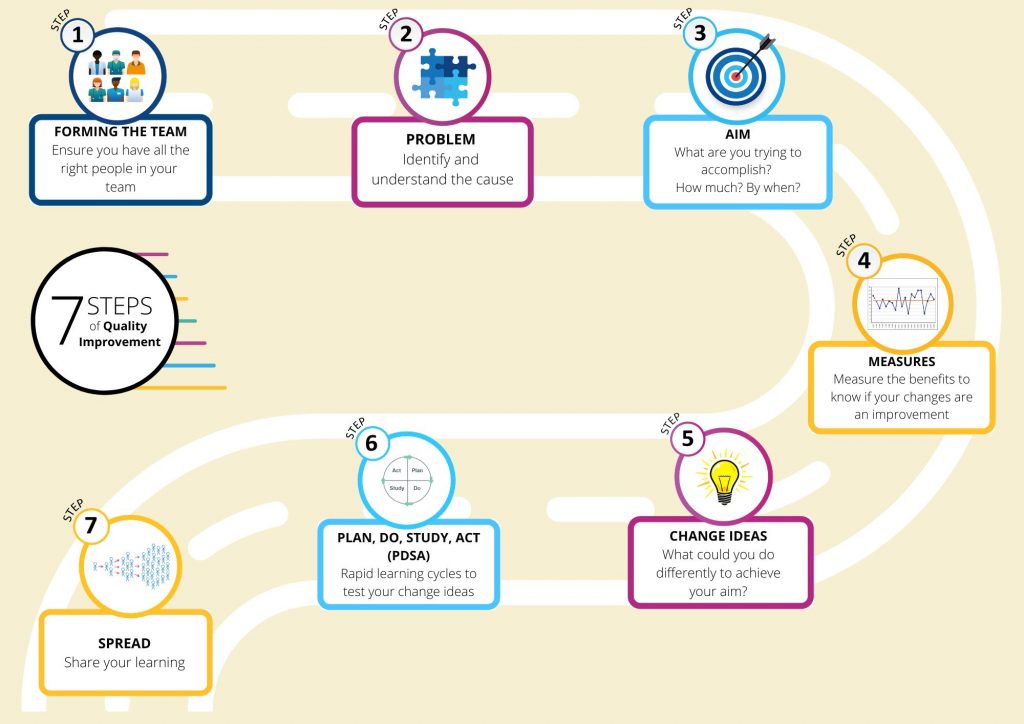

Step 1: People
Ensure you have all the right people in your team
The first consideration in any quality improvement work is bringing together the right people for the job. Think about who you need on board to make the change happen.
Here is a good checklist…
- Anyone who wants to be involved in the change
- Anyone who would be upset if they were not involved in the change
- Anyone who opposes the change
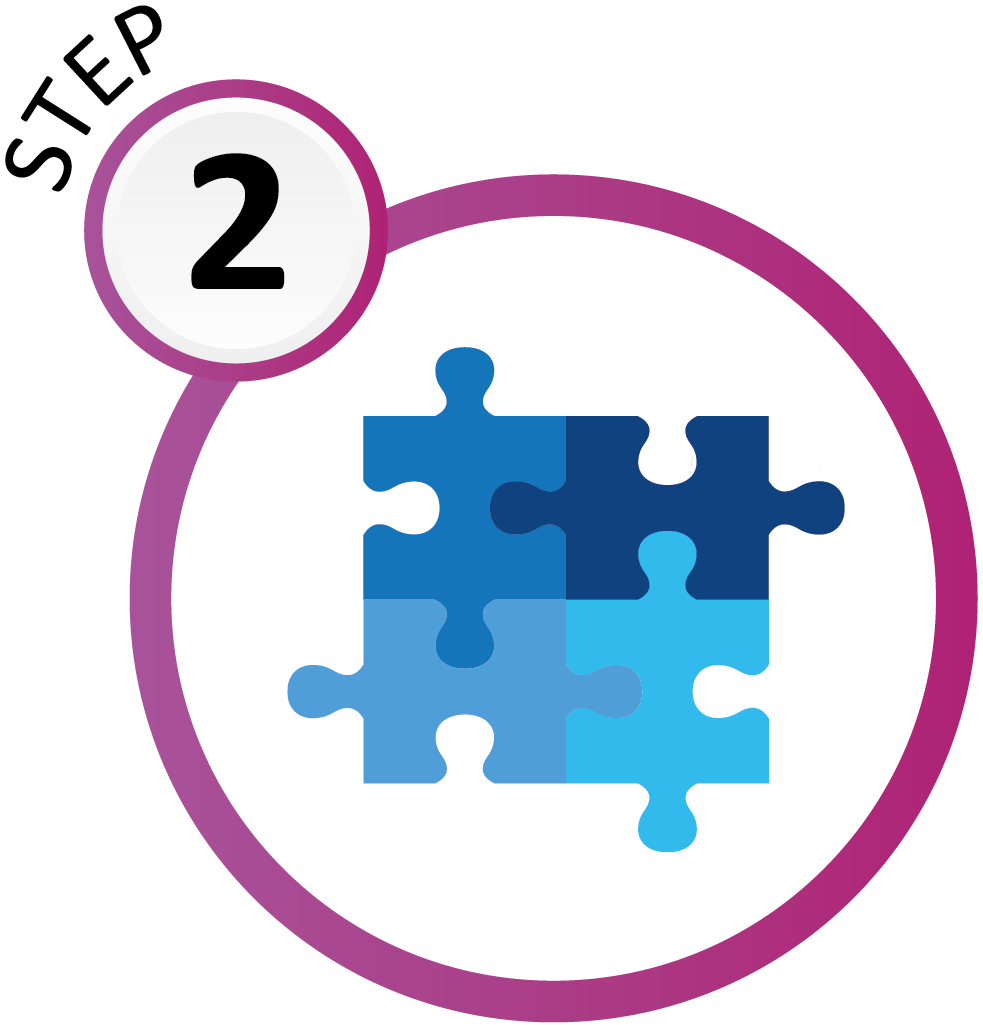
Step 2: Problem
Problem Understanding – Identify the cause
In the words of Albert Einstein: “If I had an hour to solve a problem I’d spend 55 minutes thinking about the problem and 5 minutes thinking about solutions.”
When people face a problem, the natural and often immediate response is to try and fix it. It’s simply the way we are wired; it’s human nature. The challenge is that when we take problems at face value can misinterpret them for what is actually a symptom or consequence. Only when we get curious can we dig deep in our thinking and conversations to unearth the root cause of the issue. A thorough understanding of the problem is pivotal to success in quality improvement.
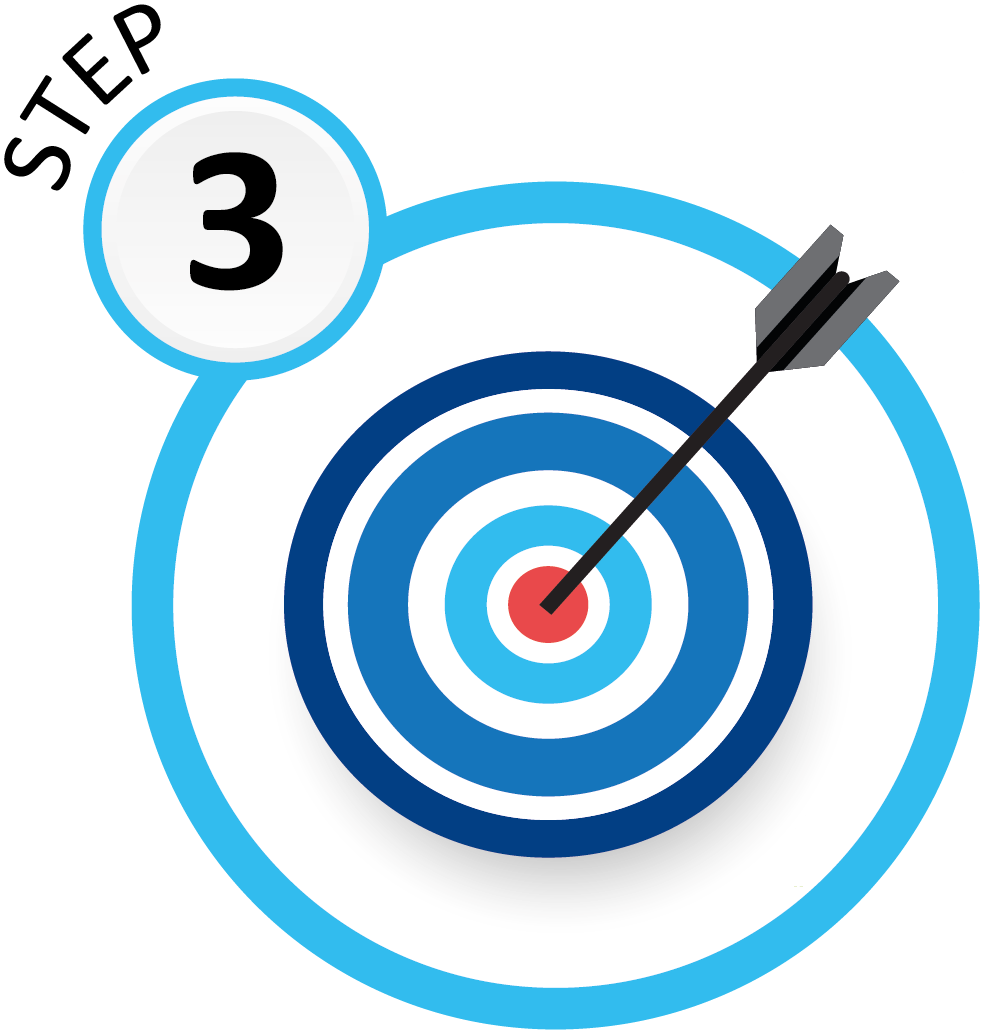
Step 3: Aim
What are you trying to accomplish? How much? By when?
Formulating a measurable aim provides an all-important shared sense of purpose and common goal. Your aim should massively inspire and excite everyone involved in the change and maybe, just maybe, feel a tiny bit scary.

Step 4: Measures
Measure the benefits to know if your changes are in improvement
Measures allow us to monitor progress and understand where we may need to make small changes to deliver better results. We use three types of measure for each quality improvement project…
- Outcome measure – to check if the change is delivering benefits
- Process measure – to check if our change process is working
- Balancing measure – to check if changes are causing any negative impact
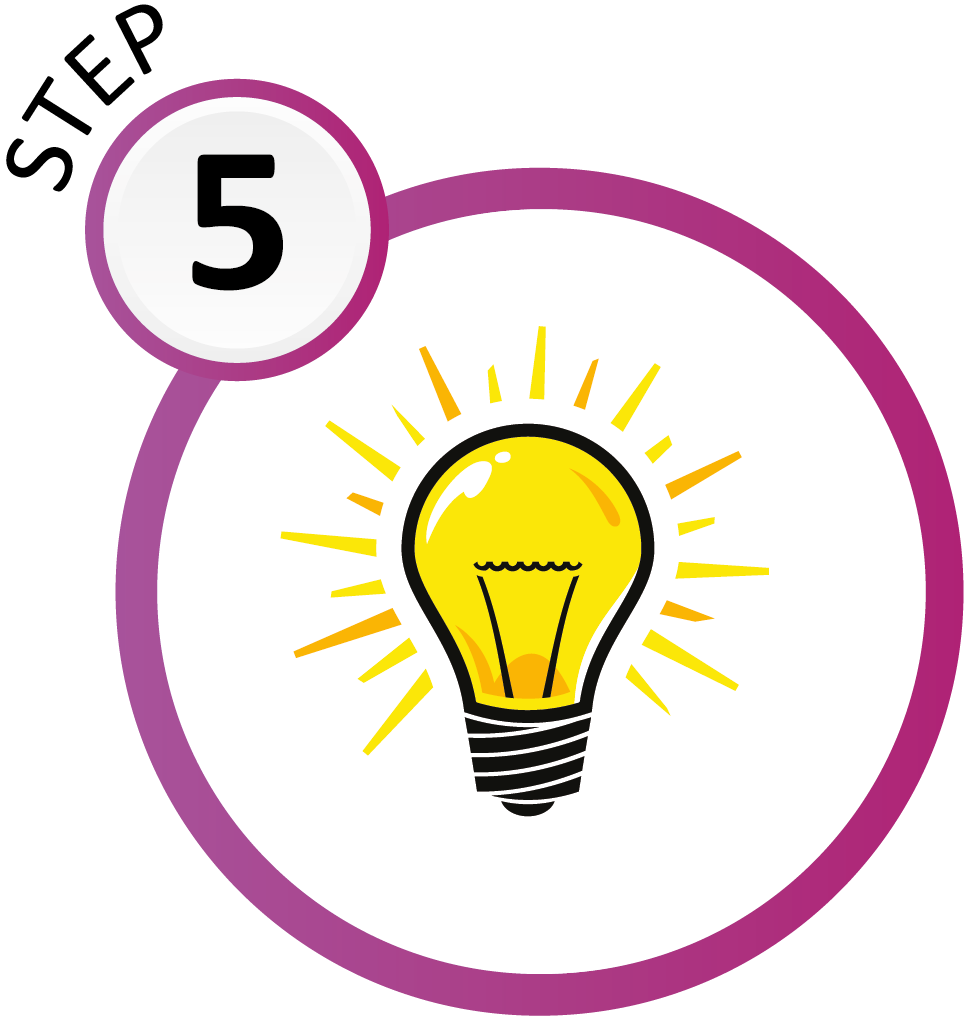
Step 5: Change ideas
What could you do differently to achieve your aim?
The solutions! Or potential solutions. Change ideas are suggestions of what you could do differently to achieve your aim. The list of ideas can be long or short but should always be more than one.
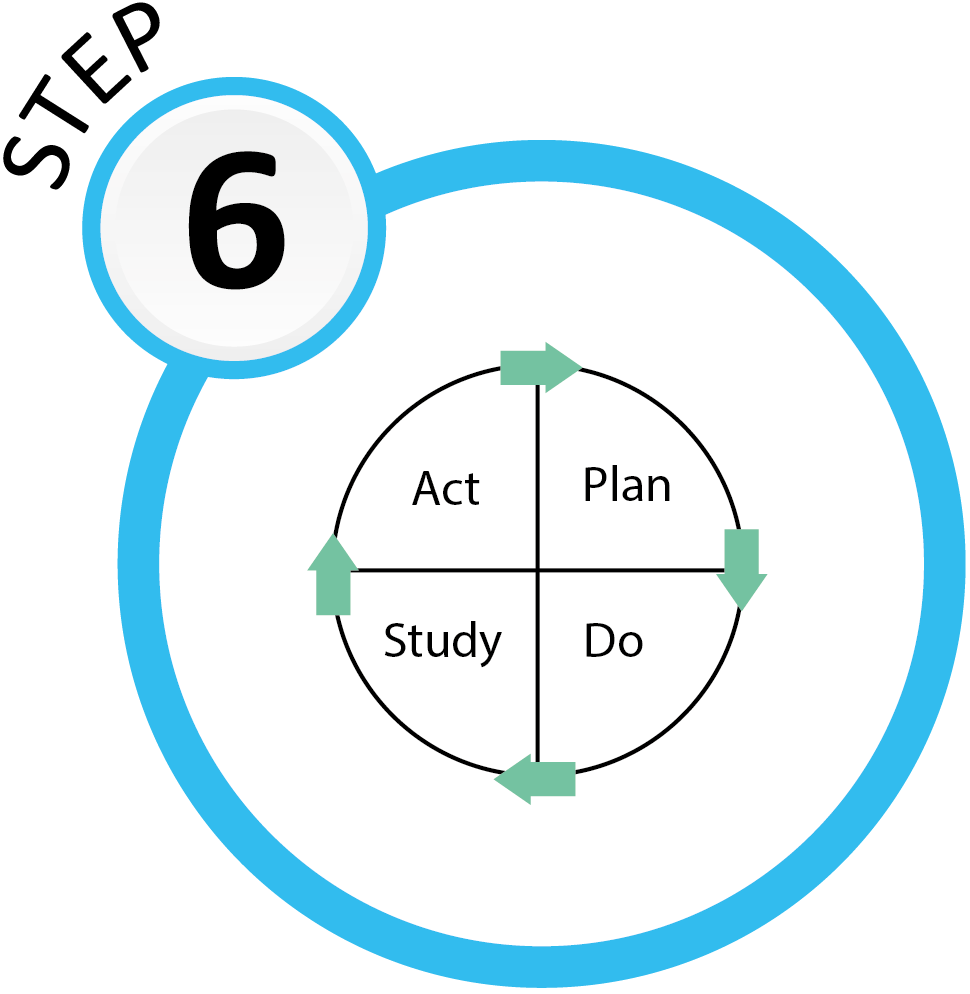
Step 6: Tests of change
Rapid learning cycles to test your change ideas
Plan, Do, Study, Act (PDSA) cycles are how we do our tests of change. The straightforward structure focuses on testing one change idea at a time, learning, fine-tuning with a single adjustment then testing again. This cycle is repeated until it stops becoming useful, then the next PDSA can start. Only when we make one change at a time can we pinpoint the things that are making a difference.
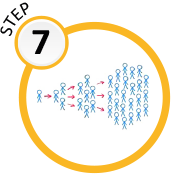
Step 7: Spread
Share your learning
Now you have cracked the formula think about who else could benefit from your wisdom. Who might be facing a similar problem? Share your learning and knowledge. Show the art of the possible. Spread what works. Inspire people.
